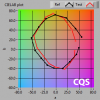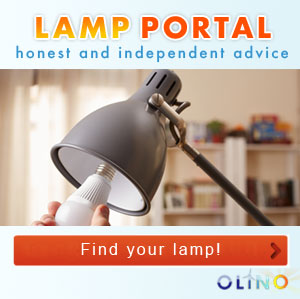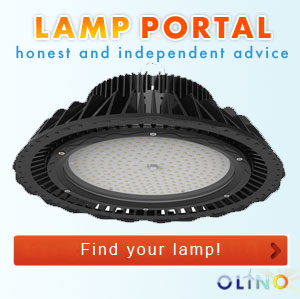Spectra of Philips Hue Lamp revealed
Posted by Marcel van der Steen in Explanation, Led lights 1 Comment» The Philips Hue lamp has been measured in several whites and colors. See this article for the measurement data in graph form and raw data. In the file you also find CCT and CRI data.
The Philips Hue lamp has been measured in several whites and colors. See this article for the measurement data in graph form and raw data. In the file you also find CCT and CRI data.
.
 How does fast charging work? What time does is cost to refill your battery? Why do we need refill stations on the main-road for electric cars? Read more, for answers on this questions.
How does fast charging work? What time does is cost to refill your battery? Why do we need refill stations on the main-road for electric cars? Read more, for answers on this questions.
 [Klik hier voor de Nederlandse versie]
[Klik hier voor de Nederlandse versie]
Two years ago it was the first time I went to Switzerland with my 100% electric Renault Zoe. 900km one way was a real challenge because back then there were no fast chargers. It made me happy if there was a semi-fast charger (22kW) on the route. This way I could not drive more than 350km per day. The next year there were some fast chargers and it was possible to make an entire tour of almost 2400km through Switzerland.
This year I set the bar higher, and the outward journey is already 2000km! Now I will mostly use fast chargers, and cover 550km per day. Seven different charge cards or phone Apps have been arranged. Hopefully they all will work, because I wasn’t able to test most of them. Furthermore, I will not use ferries on this trip, but drive entirely over bridges in Denmark and Sweden to Geiranger (Norway), where among other things I will attend the 20th anniversary of the Norwegian electric car association.
Infrared panels nearby windows, will the infrared rays pass through them or not?
Posted by Marcel van der Steen in Explanation 2 Comments» Infrared panels are offered more and more as a cheaper (and more comfortable) alternative, compared to central heating, to create an adequate inner climate in your house and rooms. I understand very well the theoretical functioning of these panels and how to create a pleasant in-house climate. However recently have have run into two companies, that sell a lot of infrared panels, telling me that the infrared rays coming from infrared panels do travel straight trough windows, and even that their infrared panel manufacturers do tell them that. This is nonsense to me, and in this article I explain that infrared radiation coming from infrared panels do not travel straight through windows. I will explain that heat (energy) can travel through windows (easier than through walls) but that is a different process.
Infrared panels are offered more and more as a cheaper (and more comfortable) alternative, compared to central heating, to create an adequate inner climate in your house and rooms. I understand very well the theoretical functioning of these panels and how to create a pleasant in-house climate. However recently have have run into two companies, that sell a lot of infrared panels, telling me that the infrared rays coming from infrared panels do travel straight trough windows, and even that their infrared panel manufacturers do tell them that. This is nonsense to me, and in this article I explain that infrared radiation coming from infrared panels do not travel straight through windows. I will explain that heat (energy) can travel through windows (easier than through walls) but that is a different process.
Lighting for the body, not just for the eyes
Posted by Marcel van der Steen in Explanation No Comments» To ensure that light is functional in the internal work space, we use for instance the norm EN 12464-1. It describes for different work situations the minimum average illumination values, the evenness, CRI ,UGR and sometimes the color temperature. But light does more. It can have a very positive effect on human’s well being. Norms 67600 and 5031 tell how.
To ensure that light is functional in the internal work space, we use for instance the norm EN 12464-1. It describes for different work situations the minimum average illumination values, the evenness, CRI ,UGR and sometimes the color temperature. But light does more. It can have a very positive effect on human’s well being. Norms 67600 and 5031 tell how.
OliNo implemented the measurement of melanopical effectiveness according to these norms.
 The STORM pulse is a prototype electric motorcycle. We interviewed Yuri Steinbuch of STORM Eindhoven about the STORM Pulse during the electric mobility tradeshow (Ecomobiel) in the Netherlands. Yuri talks about the unique battery pack of the motorcycle and the planned tour of 80 days around the world.
The STORM pulse is a prototype electric motorcycle. We interviewed Yuri Steinbuch of STORM Eindhoven about the STORM Pulse during the electric mobility tradeshow (Ecomobiel) in the Netherlands. Yuri talks about the unique battery pack of the motorcycle and the planned tour of 80 days around the world.
 When I was looking for a spectrum of moonlight, I could not find it on the internet. As I do a lot of lamp measurements myself (see the category lamp measurements), I decided to measure the moon spectrum myself and put that info available on the internet.
When I was looking for a spectrum of moonlight, I could not find it on the internet. As I do a lot of lamp measurements myself (see the category lamp measurements), I decided to measure the moon spectrum myself and put that info available on the internet.
Endurance LED bulb and relation to warmup measurement
Posted by Marcel van der Steen in Explanation No Comments»![]() At OliNo we do a warm-up measurement on the lamps we test. During this warm-up until stabilization, a lot of the LED lamps show a decrease in consumed power and as well in light output. When the drop in light output is significantly bigger than the drop in consumed, this could be an indication of a not too long lifetime.
At OliNo we do a warm-up measurement on the lamps we test. During this warm-up until stabilization, a lot of the LED lamps show a decrease in consumed power and as well in light output. When the drop in light output is significantly bigger than the drop in consumed, this could be an indication of a not too long lifetime.
 It all started with 157 people, founders of Som Energia, in December 2010 with the aim to jointly produce and consume their own renewable energy. In January 2011 work started to obtain all necessary permits for selling electricity started and by October the service was launched, initially for just a few hundred clients.
It all started with 157 people, founders of Som Energia, in December 2010 with the aim to jointly produce and consume their own renewable energy. In January 2011 work started to obtain all necessary permits for selling electricity started and by October the service was launched, initially for just a few hundred clients.
Color Quality Scale (CQS): Measuring the color quality of light sources
Posted by Marcel van der Steen in Explanation 11 Comments» The Color Rendering Index (CRI) is a quantitative measure of the ability of a light source to reveal the colors of various objects faithfully in comparison with an ideal or natural light source. The CRI is originally designed to evaluate fluorescent lamps. The CRI was intended to measure the ‘naturalness’ of objects’ colors, not preference. It has been found that the CRI is not reliable when used for LED lamps.
The Color Rendering Index (CRI) is a quantitative measure of the ability of a light source to reveal the colors of various objects faithfully in comparison with an ideal or natural light source. The CRI is originally designed to evaluate fluorescent lamps. The CRI was intended to measure the ‘naturalness’ of objects’ colors, not preference. It has been found that the CRI is not reliable when used for LED lamps.
A successor, the Color Quality Scale (CQS), has implemented a number of improvements making it an alternative to the CRI and a better method for determining the color quality.





Recent Comments